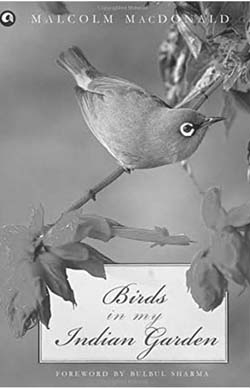To review a classic is always difficult. How much could one praise and fawn over a book which reads so delightfully that you tend to forget that it is a nonfiction piece of work? Malcom Mcdonald was the UK High Commissioner to India in the 1950s and lived in the heart of Delhi, the Lutyen’s zone. Being a bird watching enthusiast he spent a lot of time observing the feathered ones in his garden.
One aspect of the book which hits you instantly as a Delhi bird watcher is how easily Malcom was able to spot birds like the Pallas Fish Eagle in his garden. In 2015 if you tell a fellow ‘birder’ that you saw this bird in your garden then he will think that you are probably crazy. This of course shows how far we have come in the last 60 odd years, despite central Delhi being considered ‘green’ even today. The green cover area in Delhi is 19 percent of the total area, which is still much more than in other cities and one that makes Delhi one of the greenest cities. It boasts of bird parks like the Okhla sanctuary, the Aravalli biodiversity park and the Yamuna biodiversity park among numerous other unofficial birding sites. It also has neighbourhood parks and gardens which are rich in birdlife even with the rapid urbanization the city has gone through in the past few decades.
One of the major highlights of this book is the manner in which McDonald meticulously observes and understands the behaviour and movements of the birds. How they eat, call, court the female sex or preen themselves. He brings in an human angle to the whole scenario which makes you relate with the book even more. For example on page 31 he writes about domesticated fantail pigeons, ‘In due course each hen laid two eggs. That happened over and over again, and the number of pigeons should have multiplied at an embarrassing and indeed alarming rate. Yet somehow that never happened. Some eggs were addled, others were stolen by gourmet House Crows, numerous chicks who got born soon died of neglect by their astonishingly incompetent parents, and many of those who survived longer were murdered by stray cats or kidnapped by raiding birds of prey.’

